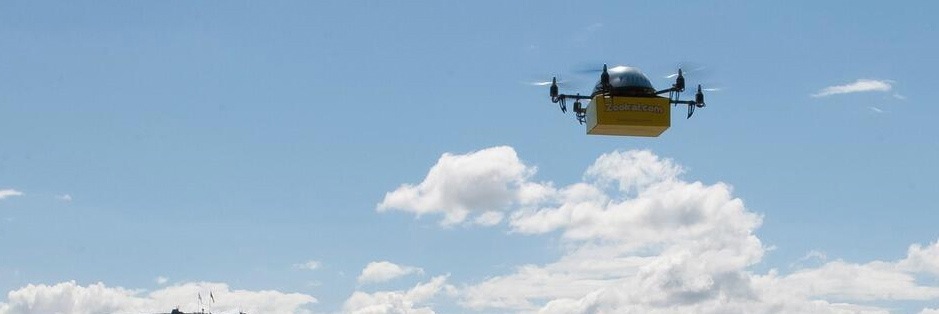Looking at textbook delivery service differently: Flying books may soon populate the skies through drones
The History of Drones: What can the past tell us?
As technology becomes more advanced and cheaper, civilian usage of drones has developed rapidly as Zookal’s textbook delivery service evidently exemplifies. What is now used to deliver tacos, cakes and textbooks was initially designed for investigative purposes and the drones’ military and commercial development was often out of sight of the public. Here is a brief summary of drone usage throughout time:
Drones were originally used for taking photographs from the sky, the first aerial photograph taken using a kite in 1883. By 1898 this technology was used in the Spanish-American War, which led to the first military aerial reconnaissance photos.
In the 1930s, the British Royal Navy developed a radio-controlled UAV called the Queen Bee, serving as aerial target practice for British pilots. During the World War II, the Nazis created their own UAV known as the Revenge Weapon I, to be used against non-military targets. It became responsible for more than nine hundred civilian deaths and injured more than thirty-five thousand across Britain. Now do you see all the concern for flying textbooks?
The United States used drones in the 1960s and 70s for surveillance flights during missions over China and Vietnam. At this point, they were operated with a joystick control. Israel also developed the Scout and the Pioneer during the late 70s and 80s and were used to transmit live video – a big step away from photos.
Since then, UAVs have become smaller and cheaper, so much so that one could use a drone as their own surveillance device and accomplish a growing list of tasks. According to CTV News, a company in British Columbia is using drones to survey gravel pits, map deposit sites and explore for minerals. The RCMP has used them in the past in search-and-rescue operations. McGill researchers are using drones to track bird and bear populations. And controversially, prison guards in Quebec are requesting tighter security because drones are often flying over their institution, dropping drugs for inmates.
It’s all a far cry from the usual military uses one often associates with drones, but concern and fear still lingers among residents worldwide.
Other companies you didn’t know that are currently trying drone deliveries:
In the past few months, several companies have received buzz for their use of drones to deliver their products. Here’s a list of a few:
- BurritoBomber claims that it will let one place a burrito order from his or her smartphone and drop a “delicious delicacy” from above.
- South Africa’s OppiKoppi music festival claims to have dropped cold beers from the sky, delivered safely to thirsty festival goers via parachute. (Presumably, there have been no complaints of beer falling on heads.)
- Dominos Pizza’s drone, called the DomiCopter, will be delivering pizza
- And perhaps most recently, Amazon announced that it is planning to start delivering products by unmanned aerial vehicles.
It remains to be seen just how successful Zookal’s pilot program will be for universities students in Sydney and, if ever, students outside of Australia. Nonetheless, Heather Elder hopes there will be flying textbooks in her academic future.
Known as Michelle, she’s been writing since hands could grasp paper and pencils. She’s learned that a pencil is an extension of the hand, a gateway to the psyche. Currently, she is an undergraduate at the University of Toronto, completing a BA in English and Book & Media Studies. For more of her quirkiness, follow her blog at http://therealmichellemonteiro.wordpress.com.





























Share the post "Looking at textbook delivery service differently: Flying books may soon populate the skies through drones"